How to bet on popular projects in advance? Overview of the current status of pre-launch protocols
Written by: THOR, HYPHIN
Compiled by: Luffy, Foresight News
Speculation is the lifeblood of the cryptocurrency market, and savvy opportunists often find new ways to bet on assets. In most cases, people invest in things that already exist because there is some data that allows them to make informed decisions. However, recent market trends indicate an increase in airdrop allocations and trading volumes of unreleased assets.
Introduction
The surge in pre-market trading interest is largely attributed to countless airdrop activities and highly anticipated projects that hope to leverage the booming market and positive sentiment to push their tokens onto the public market.
With all the necessary catalysts for new narratives in place, protocols like Aevo, Hyperliquid, and Whales Market have begun to seize this opportunity. These platforms offer perpetual futures for tokens that have not yet been issued.
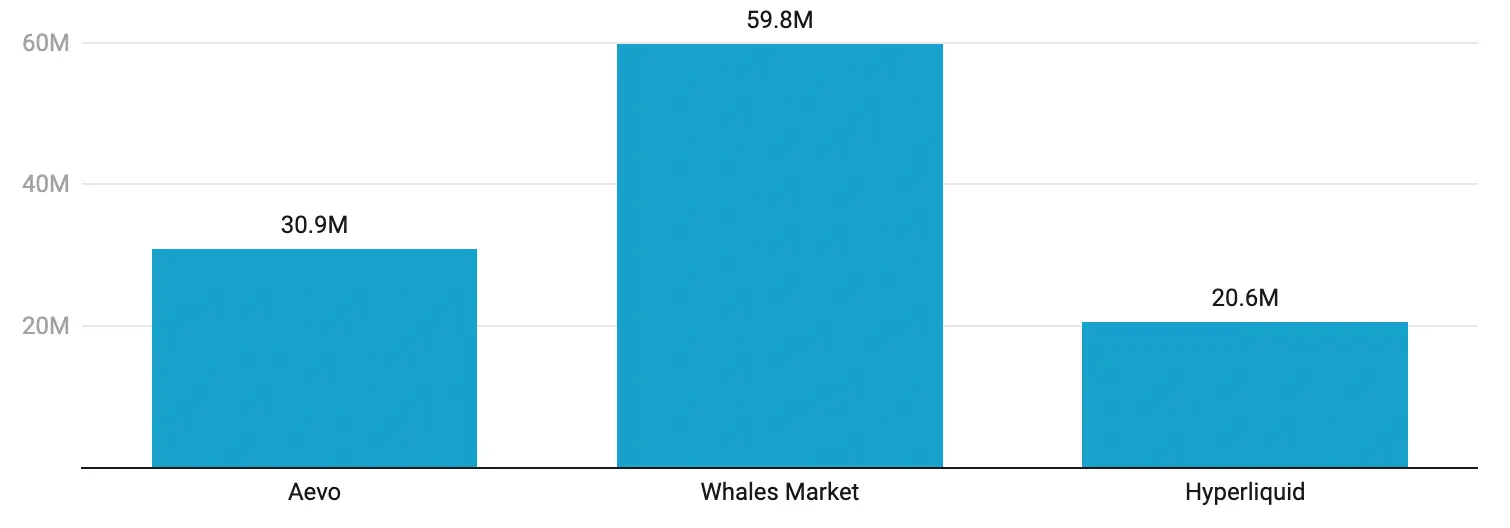
Pre-market trading volume of Aevo, Whales Market, and Hyperliquid
Keep in mind that these tools are highly volatile and should be used with caution, as their liquidity is questionable, and determining the fair value of their underlying assets is very difficult.
Given the high speculative nature and risks of the financial products mentioned, what value and opportunities do they offer traders? We will attempt to find answers in this article by analyzing market data.
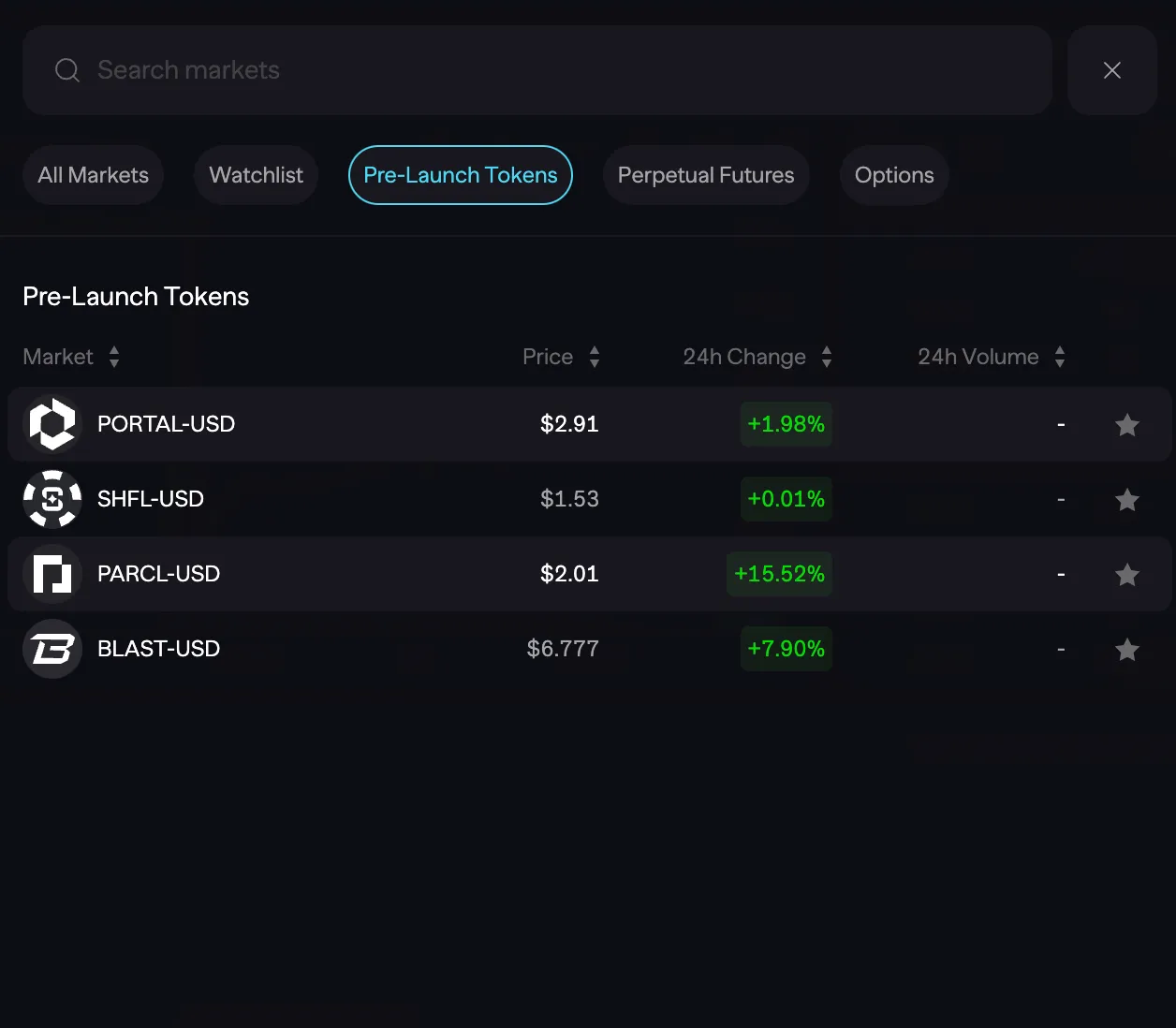
Pre-launch market of Aevo
Historical Performance
With the help of exchange APIs and historical data, we can observe the price performance of all assets that have ever traded in the pre-market and understand their performance after officially launching.
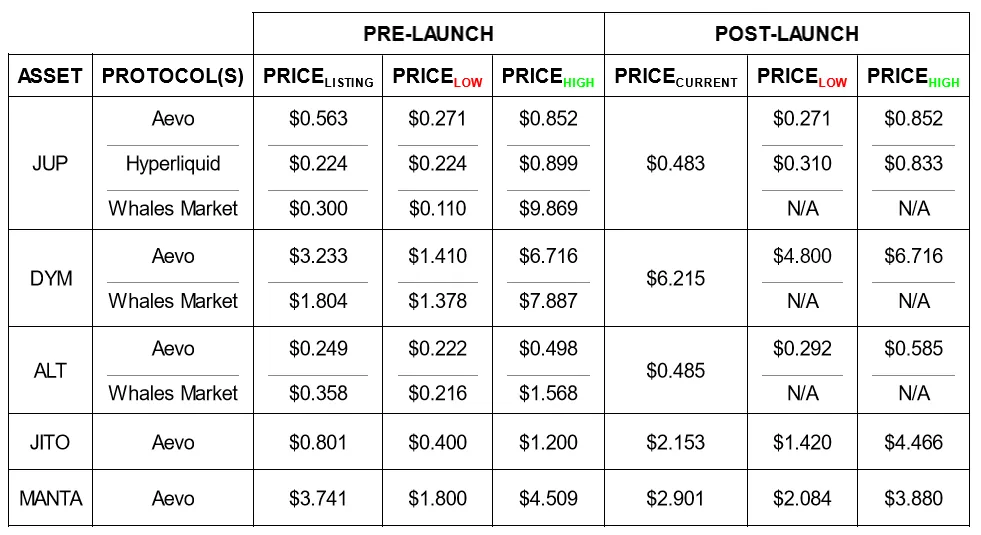
Comparison of asset prices before and after the launch of some protocols
A common pattern among most such assets is that trading volume is relatively low after listing, and volatility and trading volume peak as the launch date approaches, after which activity begins to decline.
Objectively speaking, the initial listing price of each asset in the table is not its price peak. Airdrop tokens have performed exceptionally well over the past six months, despite the general belief that once airdrop tokens become tradable, they will have a significant impact on prices.
However, this does not mean that people should immediately buy assets after they are listed in the pre-market. Price fluctuations can lead to liquidations, and since the listing criteria are unknown, profits cannot be guaranteed.
In terms of trading volume, it is clear that sought-after assets, rather than those merely circulating on Twitter due to their incentives, have garnered more attention than other upcoming tokens, most of which struggle to exceed $100,000 in daily trading volume.

Trading volume share of JUP in different pre-markets
For Jupiter, after being hyped for a while during Solana's expansion, they have taken the spotlight by absorbing massive liquidity.
Current Pre-launch Market
Having reviewed historical data, let’s look at the current opportunities. As of today, there are a large number of unreleased tokens available for trading on Aevo and Hyperliquid.
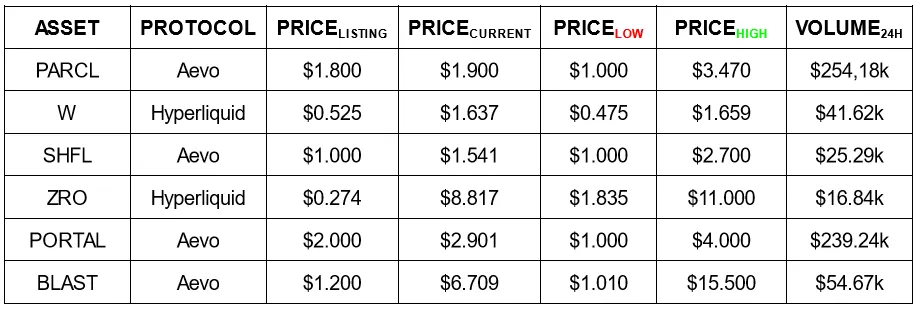
Currently active pre-launch assets on Aevo and Hyperliquid
Aside from the recently launched Parcel and Portal, not much active trading is happening. From the price performance, most tokens are performing well, with a few tokens increasing several times over a few months.
Let’s select some interesting projects from the list to see if we can determine whether their valuations are comparable to similar protocols:
Wormhole (W)

Wormhole's FDV is derived from the marked price of W/USD on Hyperliquid multiplied by the total supply of tokens (10 billion)
Compared to alternative solutions in the market, Wormhole's current theoretical valuation may be inflated. Unless groundbreaking progress is announced, the token price may decline after the token generation event concludes, as the volume reflects low investor interest.
BLAST
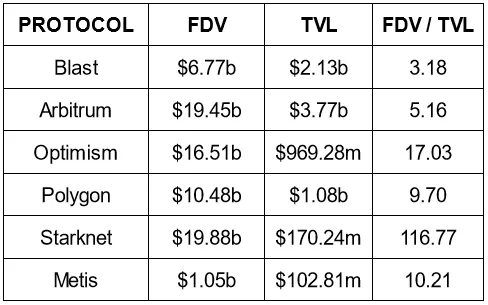
Blast's FDV is derived from the marked price of BLAST-USD on Aevo multiplied by the total supply (1 billion)
Although speculation means that FDV can change by billions at any time, the TVL metric indicates that there is significant interest in the Blast ecosystem (likely due to airdrop expectations).
From the pricing perspective of L2, Blast currently seems undervalued on paper, but more information is needed to draw clear conclusions. Unfortunately, there is little information about its on-chain status aside from TVL, making the assessment process difficult.
Points Trading
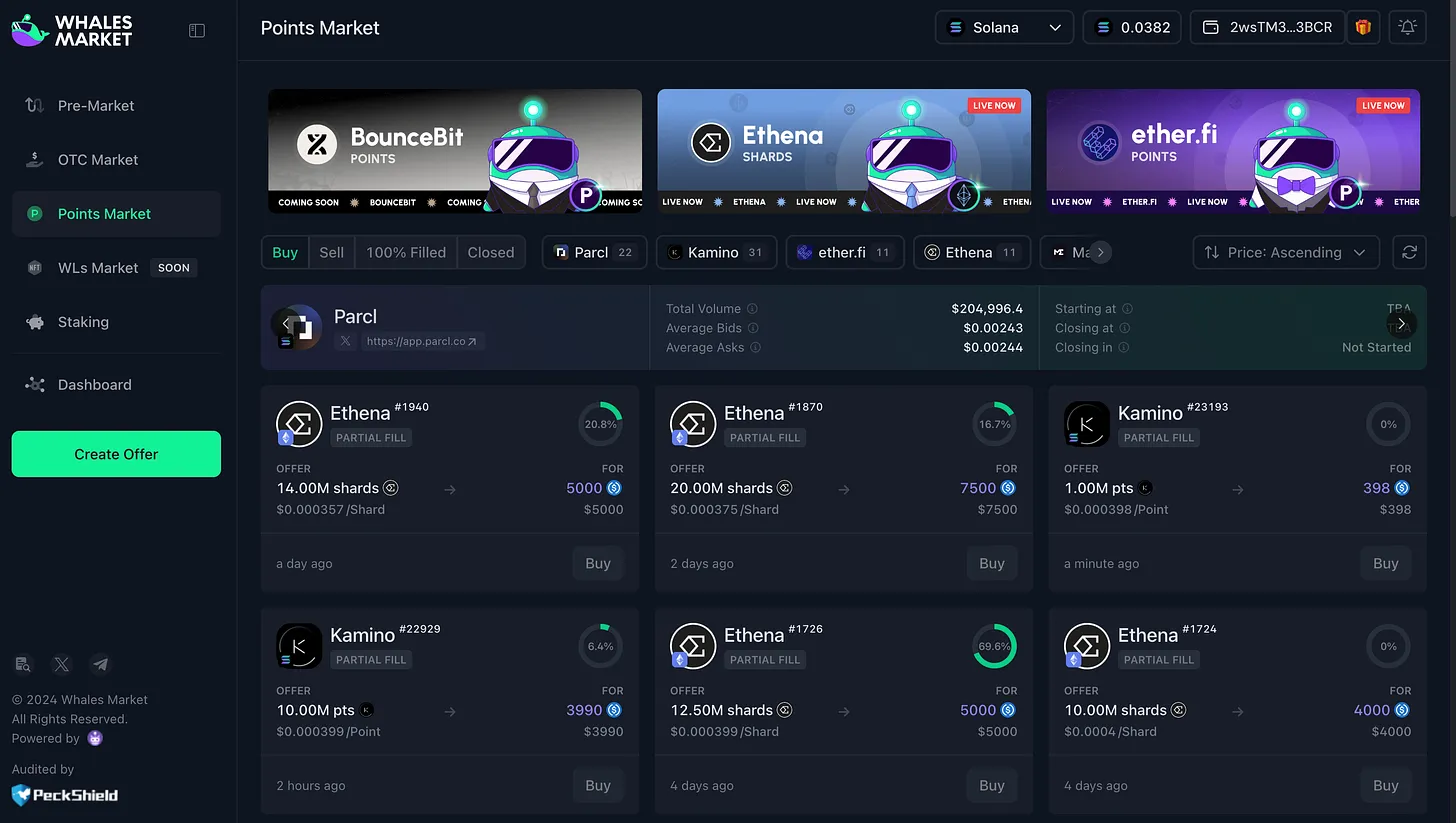
Points trading on Whales Market
Points can now be traded on the decentralized over-the-counter platform Whales Market.
"2024 will be the 'golden year' for airdrops" - @CC2Ventures
One of the most prolific airdrop farmers in the crypto space states that becoming an airdrop farmer has never been more profitable than now. The sheer number of protocols announcing points programs has brought us to the point of monetizing user interactions; if you want to gain attention as a project, incentives are a must.
The emergence of a trading market for these points is quite natural. Such channels allow airdrop farmers to monetize their harvests in advance.
So far, Whales Market has facilitated peer-to-peer points trading worth $6.3 million, and it is poised for further growth as more offers come to market.
Currently, there are 9 protocols available for points trading on the platform: Parcl, Kamino, Ethena, Magic Eden, Hyperliquid, EigenLayer, friend.tech, and ether.fi. Marginfi, Drift, and Blast should also be launching soon.
Here’s an overview of the most popular points trading currently:

Observing the average order price and median order price, it is clear that in some cases, the price distribution is not concentrated.
So far, the fair value of some of these points seems to have been established, but what does the value of a point actually mean?
The price of a point may imply what the market expects the current valuation of the upcoming protocol to be. As more points are issued, their prices may decline due to reward dilution unless market sentiment changes and expected valuations rise.
Let’s take EigenLayer as an example to test this idea.
Price per point = 0.155
Total points = 1,963,113,523
Airdrop value = Price per point * Total points = 304,282,596
(Theoretical) Airdrop allocation = 0.1 (10%)
Fully diluted value = Airdrop value / Airdrop allocation = 3,042,825,960
Since snapshot dates are often kept strictly confidential, we cannot determine how many points will ultimately be generated.
Conclusion
Through historical observation and considering frequent trading patterns, these pre-market assets continue to perform well even after going live in a bullish trend, with peaks typically occurring on the day of token release. The Aevo, Hyperliquid, and Whales Market protocols provide users with another way to bet on airdrops.










